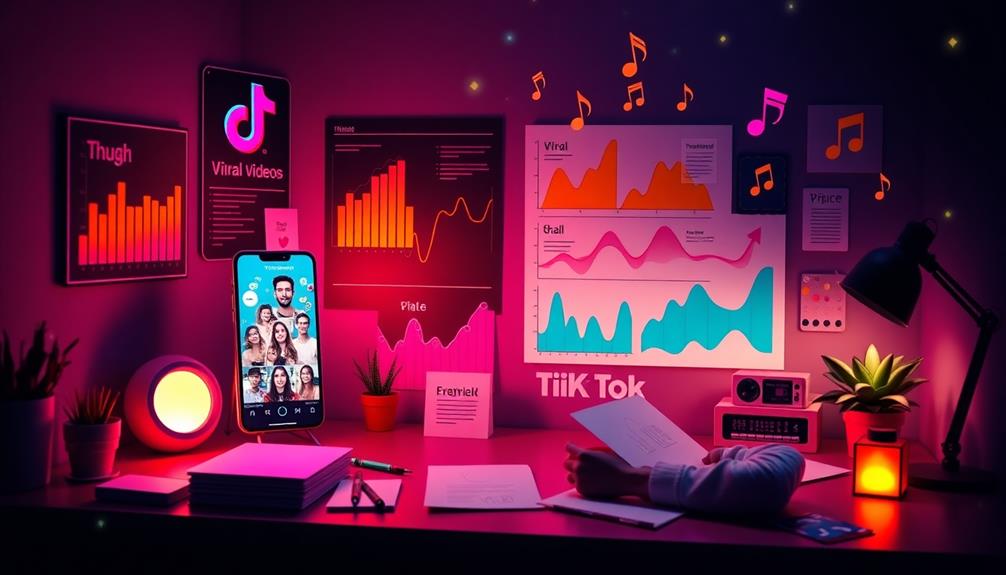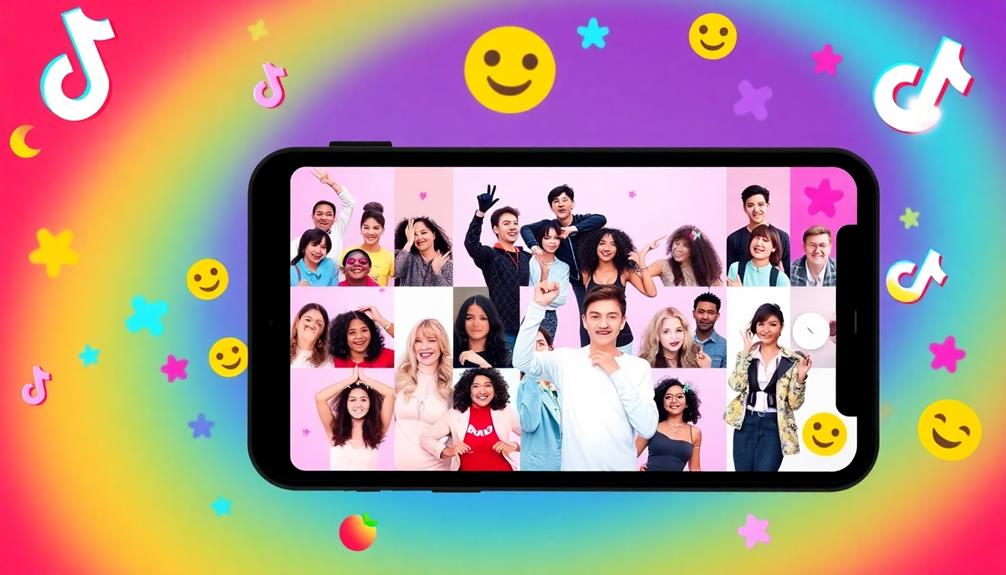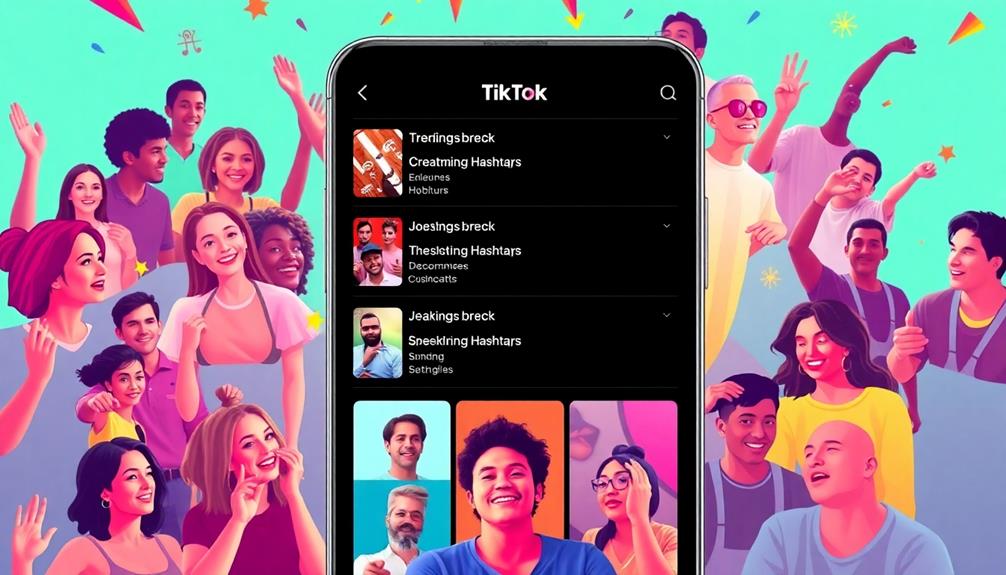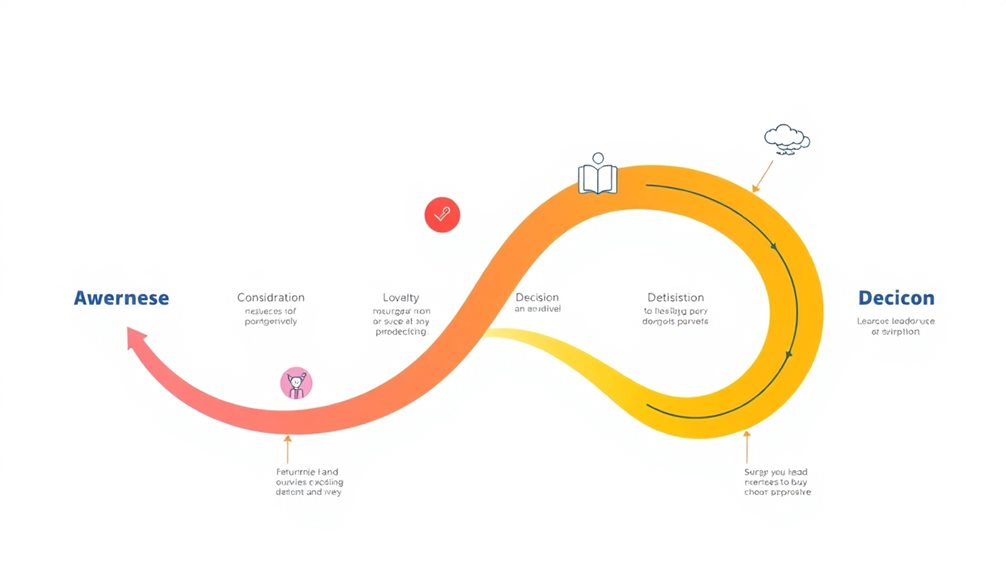To create viral content on TikTok, you need to quickly hook your audience within the first few seconds. Use trending sounds and participate in challenges that align with your brand. Keep your videos short—under 20 seconds is best. Use 3-5 relevant hashtags to boost visibility, especially those that are trending. Engage with your viewers by responding to comments and sharing personal stories. Interactivity matters; consider polls or live sessions to build community. By following these strategies, you'll enhance your chances of going viral, and there's plenty more to explore about maximizing your impact on the platform.
Key Takeaways
- Hook viewers within the first 2-3 seconds using captivating visuals or intriguing questions to grab attention quickly.
- Participate in trending challenges and utilize trending sounds to enhance content discoverability and relevance on the For You page.
- Use 3-5 relevant hashtags, including trending and niche-specific ones, to optimize your content's reach and categorization.
- Create shorter videos (under 20 seconds) to improve viewer retention and engagement, as shorter content tends to perform better.
- Foster community by responding to comments, sharing personal stories, and using interactive content like polls to increase viewer connection.
Understanding TikTok's Algorithm

Understanding TikTok's algorithm is vital if you want your content to go viral. The TikTok algorithm curates a personalized feed for each user based on their past interactions, which means your engagement metrics can make or break your video's success. Key metrics like watch time, likes, comments, and shares greatly influence how your video performs. If viewers stick around and engage with your content, it signals to the algorithm that your video deserves a spot on the For You page.
As the demand for innovative content grows, much like the integration of Intelligent Tutoring Systems (ITS), creators must adapt to maintain relevance.
To optimize your visibility, focus on important content elements. Use relevant hashtags to categorize your video and increase its discoverability. Incorporating trending sounds can also capture attention, as the algorithm favors content aligned with current trends. Remember, initial engagement signals in the first few hours after posting are vital; they can dictate your video's broader reach.
Interestingly, new accounts can achieve viral status just as easily as established ones, since follower count doesn't directly influence the algorithm's visibility determinations. The algorithm continuously learns from user behavior, so adapting to trends and audience preferences can improve your chances of going viral.
Engaging With Trends and Challenges

To skyrocket your visibility on TikTok, engaging with trending challenges is a must. These popular challenges not only boost your chances of appearing on the For You page but also lead to higher engagement rates.
Timing is vital; jump on trends while they're still relevant to maximize exposure and potential virality. Additionally, consider how the role of color accuracy in your video aesthetics can enhance viewer engagement, making your content more visually appealing.
Utilize the TikTok Discover page to find challenges that resonate with your brand identity. This guarantees your participation feels authentic and relatable, which is key to connecting with your audience.
Brands like GUESS have effectively leveraged trending challenges inspired by popular shows, showcasing how engaging with trends can broaden your reach.
Incorporating trending sounds associated with these challenges is another way to enhance your content's discoverability. Remember, 88% of users consider sound essential to their TikTok experience.
Effective Use of Hashtags

Harnessing the power of hashtags can greatly boost your TikTok video's visibility. By using trending hashtags, you can enhance discoverability on the For You page. It's crucial to strike a balance with 3-5 relevant hashtags per post, as this helps optimize audience reach without falling into the trap of generic tags like #FYP.
Here's a simple table to guide your hashtag choices:
| Hashtag Type | Purpose |
|---|---|
| Trending Hashtags | Increases visibility and relevance |
| Niche-Specific Tags | Better engagement rates with targeted audiences |
| Seasonal Hashtags | Capitalizes on timely trends |
| Competitor Hashtags | Helps analyze hashtags used by successful content |
Engaging with trending hashtags found on the Discover tab is key. This timely participation can notably boost your chances of reaching a larger audience when interest peaks. Additionally, take time to analyze hashtags used in competitor content to refine your hashtag strategies. By selecting the right mix of hashtags, you'll effectively enhance your content strategy and attract the right viewers.
Creating Engaging Content

Creating engaging content on TikTok is vital for capturing your audience's attention right from the start. You've got just 2-3 seconds to hook viewers, so consider using compelling questions or intriguing visuals.
In the sector of content creation, focusing on early detection of defects in your video quality can enhance your overall presentation, ensuring that you meet defined standards for engagement, much like in Software Quality Assurance. Aim for shorter videos, ideally under 20 seconds, as these tend to retain viewer attention better, boosting your engagement rates.
Incorporating trending sounds can greatly enhance your videos since 88% of TikTok users find sound essential to their experience. Don't forget to use 3-5 relevant hashtags to categorize your content and improve discoverability. Avoid generic tags like #FYP; clarity is key for reaching the right audience.
Experimenting with various content formats can also help you identify what resonates best with your viewers. Whether you lean into humor, share educational snippets, or tell relatable stories, authenticity is key.
Stay true to yourself, as audiences appreciate genuine content.
Interacting With Your Audience

Engaging your audience goes beyond just creating intriguing content; it involves building a genuine connection with them. For instance, sharing personal stories or experiences related to your content can resonate deeply with viewers and foster emotional connections.
Responding to comments fosters a sense of community and encourages more interaction, which can boost your visibility on TikTok's algorithm. When viewers see you engaging with their comments, they're more likely to return and participate again.
Utilizing features like video replies can directly address questions or comments, enhancing your connection and promoting further engagement. Don't shy away from incorporating polls and interactive content, such as challenges or duets; these encourage viewers to share their thoughts and experiences, increasing engagement rates.
Additionally, consider incorporating elements from virtual birthday party ideas that encourage audience participation and interaction.
Hosting live sessions is another great way to interact in real-time. This not only enhances viewer loyalty but also keeps your audience invested in your content.
Frequently Asked Questions
What Is the Trick to Going Viral on Tiktok?
The trick to going viral on TikTok lies in enchanting your audience quickly, using trending sounds, engaging with current trends, and leveraging relevant hashtags. Monitor your performance metrics to refine your approach and boost visibility.
How to Create Viral Content on Tiktok?
Creating viral content on TikTok's like catching lightning in a bottle. Use trending sounds, keep videos under 20 seconds, start with a hook, and engage your audience—these elements spark engagement and boost visibility.
How Do You Get 100% Viral on Tiktok?
Getting 100% viral on TikTok isn't guaranteed, but you can dramatically increase your chances. Focus on enchanting content, trending sounds, and engaging with your audience consistently to boost your visibility and reach.
How to Get 1000 Views on Tiktok?
Getting 1,000 views on TikTok's like catching lightning in a bottle. You've gotta post consistently, use trending sounds, engage with challenges, and incorporate relevant hashtags to boost your discoverability. Keep videos short and engaging!
Conclusion
In the delightful world of TikTok, crafting viral content is like painting a vibrant masterpiece. By understanding the algorithm, embracing trends, and engaging with your audience, you're setting the stage for success. Don't forget the magic of hashtags—they're your trusty companions on this creative journey. So, plunge in, have fun, and let your imagination run wild! With a sprinkle of charm and a dash of authenticity, you just might find your content soaring to new heights.










